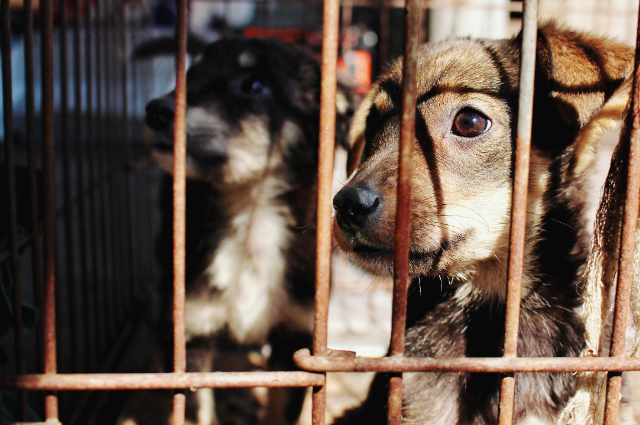
Photo by Alin Luna on Unsplash
On August 14, 2025, India's Supreme Court found itself at the centre of a heated debate concerning urban animal management when it chose to withhold its final ruling on multiple legal challenges against a highly contentious directive. The disputed order, issued just three days earlier on August 11, mandated the comprehensive removal of all stray dogs from Delhi's streets by requiring their permanent confinement in shelter facilities within a strict timeframe of six to eight weeks with an absolute prohibition on their future release into public areas.
The three-judge panel, consisting of Justices Vikram Nath, Sandeep Mehta, and N.V. Anjaria, demonstrated judicial restraint by reserving their judgment while simultaneously refusing to grant an interim stay on the implementation of these sweeping municipal directives. This decision leaves the original order in effect during the period of legal review, creating immediate operational challenges for city authorities and animal welfare organisations.
Genesis of the Controversial August 11 Directive
The roots of this judicial intervention trace back to an earlier Supreme Court order dated August 11, 2025, delivered by a different bench comprising Justices Pardiwala and R. Mahadevan. This original directive emerged as a direct response to rising concerns about stray dog-related incidents in the national capital region. The court's language was particularly emphatic, instructing authorities to "at the earliest start picking up stray dogs from all localities, more particularly the vulnerable localities of the city, as well as areas on the outskirts."
The judicial mandate placed the burden of implementation squarely on municipal shoulders, stating that determining the methodology for execution was the responsibility of local authorities. The court went further to authorise the creation of specialised enforcement units if necessary, emphasising that "there should not be any lethargy or compromise in undertaking this exercise." This directive represented an unprecedented judicial intervention in urban animal management policy.
Government's Case: Public Safety Takes Precedence
The Delhi government's position, articulated through Solicitor General Tushar Mehta, painted a grim picture of the current situation facing the capital's residents. Mr. Mehta presented compelling statistical evidence to support the government's stance, citing an alarming figure of 37 lakh (3.7 million) dog bite cases recorded in the previous year alone. This amazing number provided quantitative backing to his argument that the situation had reached crisis proportions requiring immediate judicial intervention.
Human Cost of Inaction
The Solicitor General's presentation focused heavily on the human casualties resulting from stray dog attacks, particularly emphasising the vulnerability of children. He highlighted tragic cases where children had suffered not only physical injuries but also fatal rabies infections, creating an emotional appeal for urgent action. "Children are dying. Sterilisation does not stop rabies," he argued, directly challenging the effectiveness of current animal population control measures.
Mr. Mehta's argument extended beyond just statistics to address the broader social implications, describing how fear of dog attacks was restricting children's freedom to play outdoors and causing severe injuries to young girls. This humanitarian approach sought to reframe the debate from one of animal rights versus human convenience to a matter of basic public safety and child protection.
Animal Welfare Organisations Challenge Implementation Feasibility
Senior Advocate Kapil Sibal, representing Project Kindness, an animal welfare organisation, mounted a systematic challenge to the court's directive based on practical implementation concerns. His primary argument centred on the fundamental absence of adequate shelter infrastructure necessary to accommodate the massive number of stray animals that would be collected under the court's order.
Mr. Sibal's critique went beyond mere logistics to question the philosophical foundation of implementing judicial orders without corresponding infrastructure development. His pointed observation that "this is the first time I heard the Solicitor General saying that laws are in place, but they need not be followed", highlighted what he perceived as a dangerous precedent of circumventing established legal procedures.
Constitutional and Procedural Challenges
Senior Advocate Abhishek Singhvi, representing one of the petitioning parties, introduced constitutional and procedural arguments against the August 11 directive. His characterisation that all directions in the order "put cart before horse" suggested that the court had issued mandates without first ensuring that the necessary preconditions for implementation existed.
Mr. Singhvi's argument highlighted the legal principle that judicial orders should be grounded in practical reality and available resources. His assessment that "available infrastructure is less than fractional available to accommodate all the dogs" provided a mathematical basis for challenging the feasibility of the court's timeline and requirements.
Underlying Issues and Broader Implications
The August 11 order originated from the court's suo motu (on its own initiative) response to news reports documenting rising cases of dog bites in Delhi. This genesis raises important questions about the appropriate relationship between media coverage, public pressure, and judicial decision-making. The court's reactive approach suggests that media attention can serve as a catalyst for judicial intervention in social issues, though it also raises concerns about whether such responses adequately consider all stakeholders and long-term consequences.
Path Forward: Seeking Sustainable Solutions
As the Supreme Court deliberates on the challenges to its August 11 directive, the case represents a critical juncture for India's approach to urban animal management. The eventual decision will likely establish important precedents for balancing public safety concerns with animal welfare considerations, while also addressing questions about judicial authority in complex policy areas.
The reserved judgment suggests that the court recognises the complexity of the issues at stake and the need for careful consideration of all arguments presented. Whatever the final outcome, the case underscores the urgent need for comprehensive, long-term solutions that address both immediate public safety concerns and the underlying factors contributing to human-animal conflict in India's rapidly urbanising cities.
The resolution of this matter will require collaborative efforts between judicial authorities, government agencies, animal welfare organisations, and urban planning experts to develop sustainable approaches that protect both human communities and animal populations in India's evolving urban landscape.
. . .
References:
